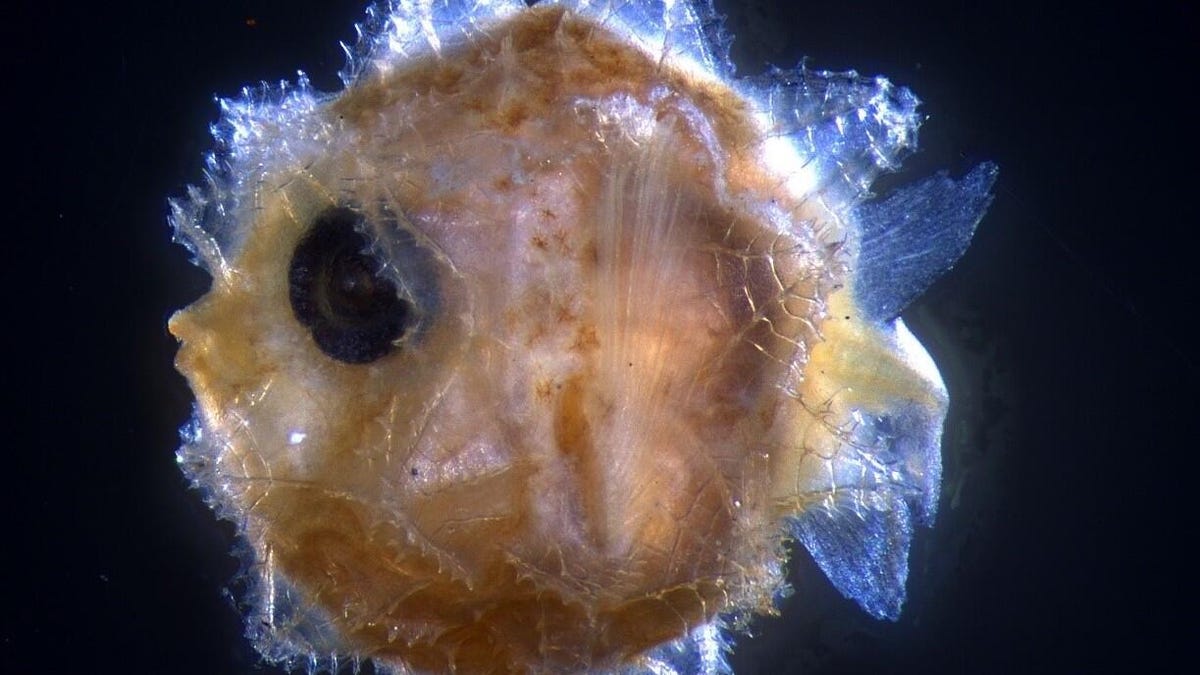Scientists finally identify giant sunfish larva and they're not giant at all
From little things, big things grow.

The larval specimen isn't quite so giant as its adult counterpart.
The giant Bump-head Sunfish, or Mola alexandrini, is a whopper. It's one of the largest fish in the world, with some reaching up to three meters, or 9.8 feet, in length. Animal Crossing fans might recognize it as one of the biggest fish you can collect in-game.
For a long time, scientists struggled to identify its larval form, partly because there simply weren't many to be found. Now they've finally managed to find the larvae for the first time, but they're far from the giants expected.
As part of a study led by the Australian Museum, a team of scientists in Australia and New Zealand were finally able to genetically identify the fish, analyzing specimens collected in 2017 by the CSIRO RV Investigator and preserved in alcohol -- but the larval specimen itself was tiny.
As a result of the unexpected size, the identification process was particularly difficult -- features normally used to identify adults aren't visible in larval specimens so it required considerable further analysis.
The Mola mola, a variety of giant sunfish, can grow up to almost 10 feet long.
"Using the resources of the Australian Museum's Genomics Laboratory, we were able to conduct DNA analysis on one of the specimens which was preserved in alcohol." said Marianne Nyegaard, sunfish expert and lead on the study, in a statement.
"A genetic ID of one of these larvae is incredibly important but only one step on the long journey towards describing the early ontogeny of all three Mola species -- an endeavour which will require global collaboration. If we want to protect these marine giants we need to understand their whole life history and that includes knowing what the larvae look like and where they occur."
Excitingly we have just genetically identified the first ever larva of the 'giant sunfish' (Mola alexandrini). These larvae are exceedingly cute but very hard to come by! https://t.co/fubDVKyjmr pic.twitter.com/ufGCOWQTzK
— Marianne Nyegaard (@SunfishOZNZ) June 2, 2020
Despite holding the record for highest potential fecundity, or ability to produce offspring, at 300 million ova in a single female, the lack of larvae thus far has made this identification process incredibly significant.
"Given sunfish are so incredibly fecund, it is an enigma why their eggs have never been found in the wild and why sunfish larvae are so few and far between -- where are they?" Nyegaard asks.

